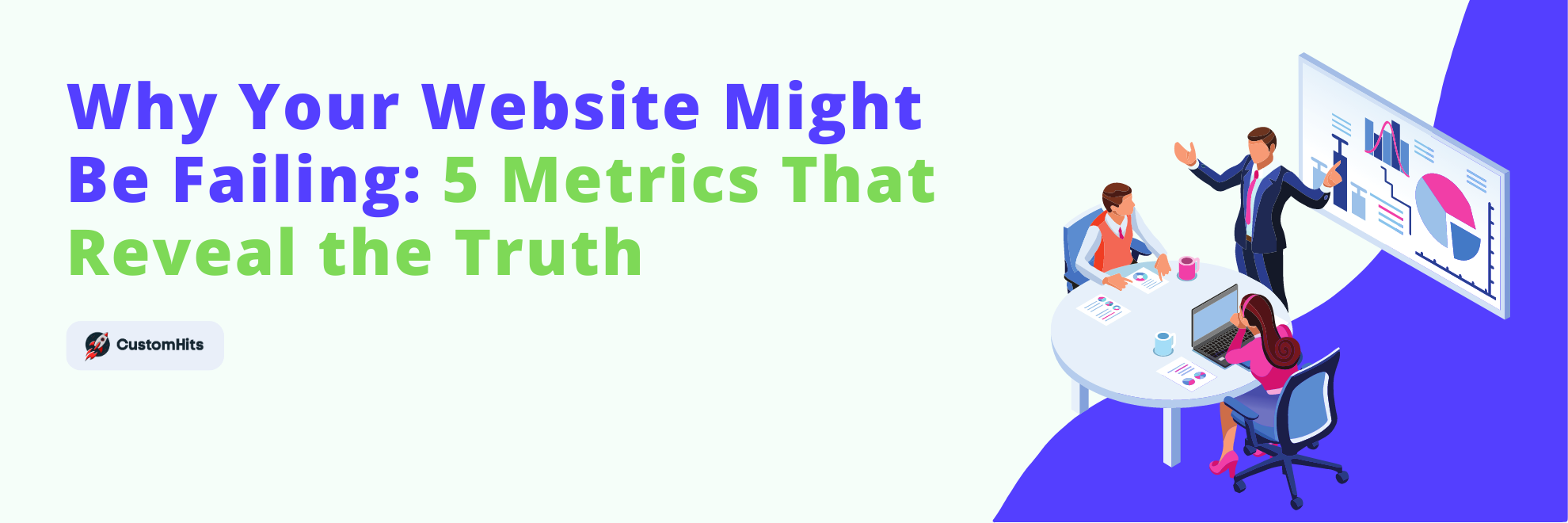

Overview
Content
Introduction: The Unsung Heroes of Website Success
Ah, the world of website management. You’ve created this digital marvel, given it a nice coat of polish, and set it off into the vast sea of the internet. But sometimes, the ship doesn’t sail smoothly. We all hit a rough patch where we find ourselves questioning, "Why isn't my website succeeding?" Today, we're here to be your navigational compass. We'll guide you through five metrics that may just be the unsung heroes—or perhaps, silent alarms—of your website's journey.
The Telltale Signs: What Failing Really Means
So, let's talk about that ominous word: "failing." It conjures images of sinking ships and falling skies, doesn't it? But in the realm of websites, failing doesn't spell doom. It's more of a wake-up call, a nudge to reassess and course-correct. Whether it’s low engagement, dwindling traffic, or a decline in revenue, recognizing failure is the first step towards a much-needed transformation. So, arm yourself with a positive attitude because the road to redemption starts with these five metrics.
Metric 1: High Bounce Rate
You've heard it before: high bounce rate is bad news. But what does it really signify? A bounce rate tells you the percentage of visitors who land on your site and then leave without taking any further action. Now, why is this problematic? Imagine throwing a party where everyone leaves shortly after arriving. Not great, right? A high bounce rate suggests your landing page isn't captivating enough to keep visitors engaged. To combat this, focus on enriching your content, improving navigation, and offering compelling calls to action.
Metric 2: Low Average Time on Page
If your analytics report shows a low average time spent on your pages, it's time to introspect. Are your pages informative and engaging, or are they as dry as a textbook? Remember, a web page should be a conversation, not a monologue. When people spend more time on a page, it generally indicates they find the content valuable. Consider updating your content, adding interactive elements, or even using videos to keep the audience engaged for longer periods.
Metric 3: Poor Conversion Rates
The whole point of driving traffic to your site is to convert visitors into customers, subscribers, or loyal fans. But if your conversion rates are looking lackluster, it's like having a shop where people walk in, browse, and leave without buying anything. Evaluate your landing pages, calls to action, and overall site usability. Sometimes, small changes like a color switch on your 'Buy Now' button can lead to significant improvements in conversion rates.
Metric 4: Low Pages per Session
So your visitors are landing on one page and then making a hasty exit without exploring further. Low pages per session often indicate that your website lacks depth or interconnectedness. Your content might be high-quality, but if it's not compelling enough to encourage further exploration, you’ve missed an opportunity. Work on interlinking your content, providing recommendations, or creating compelling 'Next Read' sections to guide your visitors through a journey, not just a pit stop.
Metric 5: Low Organic Search Traffic
We all crave that organic reach—the golden traffic that comes naturally through search engines. If your site's organic traffic is on a downward trend, it could indicate that you're not ranking well in search results. This could be due to outdated SEO practices, low-quality content, or poor backlink profiles. Revamp your SEO strategy and consider revisiting older posts to update them for current relevance.
Using CustomHits to Identify Weak Points
Now, while CustomHits excels in sending targeted traffic your way, having a good understanding of these metrics can help you make the most of that traffic. You'll have a clearer picture of which pages need work and where the quality traffic you're gaining should be funnelled for maximum benefit.
Conclusion: The Metrics Don't Lie, But They Do Guide
Numbers don't lie, and when it comes to your website's performance, these metrics serve as your guiding stars. Think of them not as a report card but as a treasure map, pointing you to areas that need attention. The goal is not just to fix what's broken but to optimize what already exists. In a world that's constantly evolving, staying stagnant is not an option. Adapt, improve, and most importantly, listen to what the metrics are telling you.
